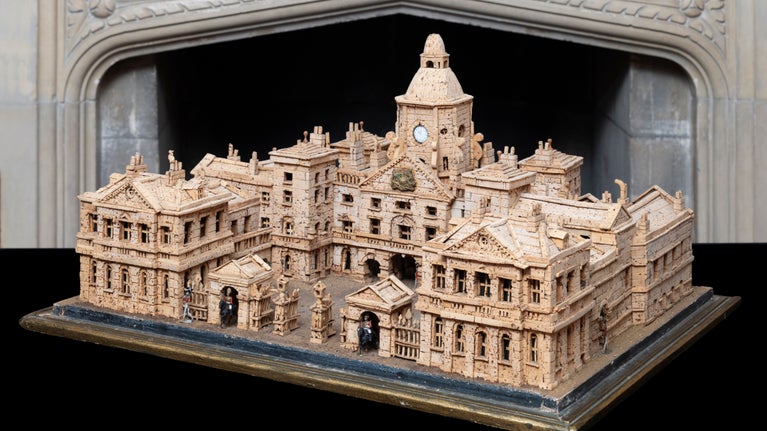
Art and collections
We care for one of the world's largest and most significant collections of art and heritage objects. Explore the highlights, our latest major exhibitions, curatorial research and more.

Taking part in sports is a popular pastime all over the world. Learn about the art and collections we look after with connections to sport throughout history, from the origins of the Olympics to the codification of croquet.
Whether played for fun, to put physical skills to the test or to entertain a crowd, sport has a long history in England, Wales, and Northern Ireland.
From the equipment and spaces used for different games to accounts and artistic representations of sporting activities, objects and places in our care are a rich resource for learning about the popularity and evolution of various sports through the centuries, many of which are still played today.
The Ancient Greeks are credited with the introduction of organised sport, holding the first Olympic Games in 776 BCE. This event included sports like running and hockey, and quickly grew to include boxing, javelin and discus. In its earliest days, sport was closely connected with warfare, and sporting competitions demonstrated individual strength and physical prowess.
The earliest known ‘creckett’ reference dates to 1598. Growing in popularity, the game spread internationally in the 19th century as a consequence of the British Empire, and remains popular around the world today.
Modern lawn tennis evolved in the late 19th century, and had deep roots in the medieval game, ‘real tennis’, which was favoured by many royals, especially the Tudors. Allegedly, Henry VIII was playing real tennis on his personal court at Hampton Court when his second wife Anne Boleyn was arrested.
One of the places in our care has a special role in the story of croquet. The rules were codified at Chastleton House and Gardens, Oxfordshire, by Walter Whitmore Jones in 1866. Jones was born and lived at Chastleton, and had a passion for inventing games. Croquet is thought to have been imported from France around this time, derived from the French game ‘paille-maille’, where players used wooden mallets to hit balls.
Swimming, whether in a pool, lake or river, remains a popular way to exercise, cool off on a warm day, or compete – as captured in this account from Beningbrough.
A book of 1674, called The Compleat Gamester, described billiards as ‘much approved of and played by most nations of Europe, especially in England, there being few towns of note therein which hath not a public billiard table…’. We don’t know much about the people who made these tables, but it was a very specialised craft, with a huge amount of skill involved in getting the bed as flat as possible so that balls would run smoothly.
The 15th and 16th centuries saw a rise in the popularity of equestrian sports. Racehorses were the sports cars of their day and proud owners commissioned artists to paint them. Racehorses feature in many of the 11,000 paintings in our care.

We care for one of the world's largest and most significant collections of art and heritage objects. Explore the highlights, our latest major exhibitions, curatorial research and more.
Discover the stories behind some of the greatest artworks and artefacts looked after by the National Trust, as told in a dedicated book, 125 Treasures from the Collections of the National Trust.

Join actor Alison Steadman in our podcast episode 'The horse on the staircase' as she explores the story behind Hambletonian, Rubbing Down – a painting by George Stubbs. You can also find more stories from series seven filled with nature and history.

There are many intriguing objects with connections to magic, mystery or death at the places in our care. From a witch's cauldron to death masks and a boat made of bones, discover some of the most mysterious objects in our collections.

Wassailing is a Twelfth Night tradition with pagan roots, which aims to ward off bad spirits and ensure a good harvest the following season. Learn more about the tradition and its celebrations, which include music, song and dance.

We look after the largest collection of tapestries in the UK and one of the largest in the world. Learn more about these status symbols and explore some of the best examples of this craftmanship at the places in our care.
